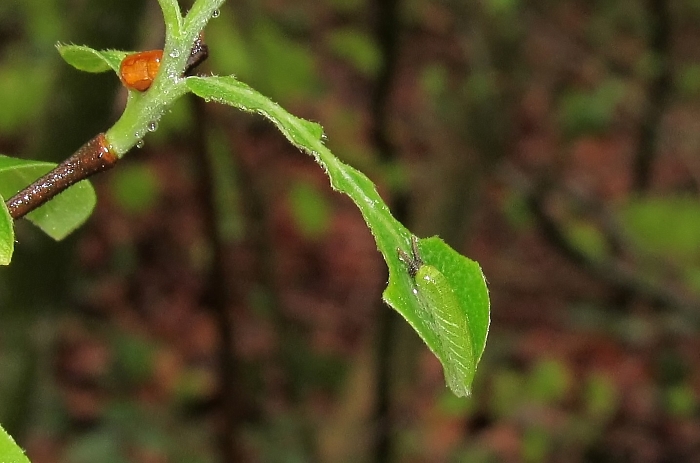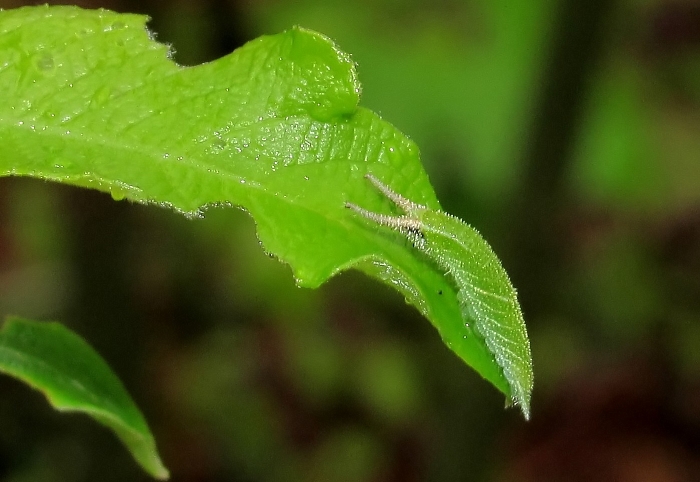28th April:
Today she looks quite different and has moved to a new leaf:
But she is still only 10mm long, unlike Agni, who changed into 4th instar today and is over 15mm.
Is this natural size variation or is she perhaps one of the few larvae that hibernate in 2nd instar (I have definitely recorded this phenomenon before). Or, was that not a skin change at all, despite appearances? If she lives long enough I should be able to answer these questions over the course of the next couple of months, I suppose. Several other very small caterpillars have adopted a similar, hunched attitude, with the same shiny, yellow shoulders. Other caterpillars are significantly bigger.
Guy


6 comments:
Guy. Please don't forget that there is always a natural eclosion divide between the sexes of this species. The males always mature a week to ten days before the females, allowing them time to accumulate the compounds needed for successful copulation. It will be interesting to see if this prediction subsequently turns out to be correct. It will be possible to determine the sex of your larvae in their mid-late 5th instar. My guess would certainly be that the early maturing larvae will be male, whilst the later maturing larvae will be female. In saying this, there are of course always exceptions to this general eclosion rule.
Thank you for this. Yes, I have been thinking about eclosion times, as the smallest larvae (at the moment) are in the shadiest spots, and I wondered if females knew the sex of their eggs when laying. I suspect not - so presume this environmental factor will be overriden by genetic factors as they grow.
But to the specific question, can you confirm the larva in these two pictures has definitely undergone ecdysis between them? If so, she ('she' after her arbitrarily assigned name) is either a 10 mm 4th instar cat (a full 5 mm shorter than the other newly 4th instar cat) or she is newly 3rd instar. I think overwintering in 2nd instar is more common in Switzerland than in the UK. Guy
Hi Guy. Both of your cats have definitely recently shed. The dark/black head capsule of Durgā (pre-shed) in indicative (to me at least) that this cat did (as you suggest) over-winter in its 2nd instar. The larvae obviously hatch from their eggs with dark/black rounded head capsules. This dark/black coloration remains in the second instar, although the head capsule in the 2nd instar obviously also has the distinctive horns. This darker head capsule colouration subsequently disappears after the 2nd instar.
Thanks again. I'll try to follow as many as possible of my now 13 cats through to pupation. I'm very lucky that I can check on them easily on my daily dog walks.
My smallest cat (Yudhiṣṭhira) is still only about 9mm long. I didn't know him last year, so haven't counted instars, but you can find a picture of him here:
here
(If the link doesn't work, this is the URL: http://www.guypadfield.com/images2015/iriscatyudhisthira5may2015b.jpg)
Guy
Guy. From the head capsule coloration, Yudhiṣṭhira also over wintered as a 2nd instar larvae. I sure however this was obvious from my previous comment posted!
Post a Comment